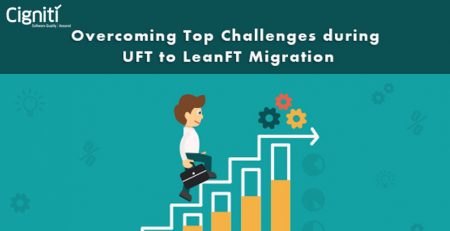An Insight into the Different Users of Lean Functional Testing Tool – LeanFT
A successful implementation of Agile and DevOps-based software methodologies in any organization requires a shift-left approach in the testing process. Functional test automation tools help provide a strong ground for implementing this approach properly.
However, working with prominent functional test automation tools such as UFT and the latest from HP – a lightweight Lean Functional testing tool – LeanFT – requires a very specific skillset and mindset. Writing code for testing waterfall-based products requires a very different approach as compared to writing testing code for solutions like LeanFT that have been specifically built for continuous testing and continuous integration as they induce a continuous development process for easy integration with Agile and DevOps teams.
The knowledge and expertise required to build robust, scalable, and stable tests with agile collaboration in the development and QA ecosystems using LeaanFT is a different set of capabilities than that required for ecosystems not being built for Agile systems.
Let us try to understand some of the types of users and developers of LeanFT in detail.
- DevTesters: The new generation of users of LeanFT are named as DevTesters and can be classified as technical users. A Devtester is capable of developing the code, as well as perform testing too. They work only in the languages and IDE that the developers use. These users have knowledge of UFT and can leverage it along with their Selenium expertise to work easily with LeanFT. Moreover, tests in LeanFT are authored using C# (Visual Studio) and Java (Eclipse) and the interactions with AUT are scripted using the LeanFT libraries and thus Devtesters easily adapt to LeanFT environment. These users are the target audience for LeanFT.
- Agile Automation Engineers: This group can be classified as more technical users than the regular test automation engineers and usually have good exposure to agile testing methodologies. With their agile testing expertise, they can easily handle and work with LeanFT.
- Test Automation Engineers: These users are technical users and already have good exposure building frameworks and are comfortable with creating test automation with the UFT. They have exposure to other languages and can easily work with LeanFT as it typically adopts UFT’s test objects and descriptions along with the Object identification mechanisms. Prior knowledge of existing concepts, mechanisms and tools of UFT proves highly useful for them to work easily with LeanFT to build stable and robust test scripts.
- Subject Matter Experts: These can be categorized under non-technical users without the knowledge of core programming activities. They mostly use tools like business process testing and script less keyword driven approaches to drive the concepts of test automation. They will not have a need to use LeanFT but work more with BPT approach directed towards test automation.
- Business Analysts/Testers: These users are non-technical and play an important role in defining STP, test flows and focus more on needed coverage. They are unable to code complex automated tests and thus have been placed under non-technical users.
After knowing about all these LeanFT users, let us know something about how to migrate your existing UFT scripts to LeanFT which is simple, easy and effortless with Cigniti’s QuickLean. LeanFT coupled with UFT can be the perfect choice for web application testing. Cigniti can help you do a comprehensive Web Application Testing for your applications with a totally tool agnostic approach.
QuickLean is an innovative migration accelerator that helps migrate your UFT scripts to LeanFT and there are many advantages due to usage of the automated migration solution. Some of these merits are: the migration takes place at an effective mode, facilitates easy creation of test assets that are easy to maintain and can be used at a later point. Moreover, minimal knowledge transition and management oversight is required with these migration accelerators, thus reducing overhead costs and helping business remain as usual during migration.
Upload your existing UFT scripts to know more about QuickLean’s effectiveness and migration process. Contact Us Today!






Leave a Reply